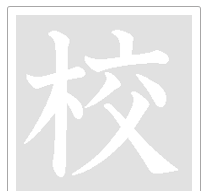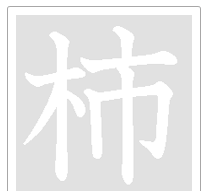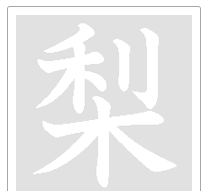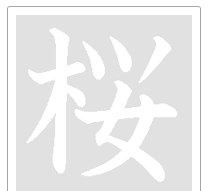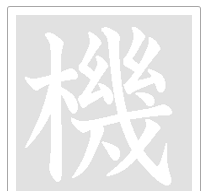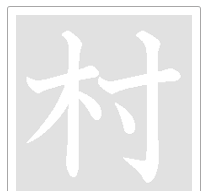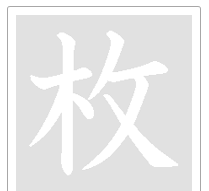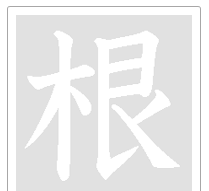 |
||||
 |
||||
Kanji composed with Radicals (3) (3) Tree |
|||||||||||||||||||||||||||||
| 木 is used as a radical to form certain kanji which represent words having something to do with trees or wood. | |||||||||||||||||||||||||||||
|
校 L9 meaning: check and correct on reading: コウ
|
|
||||||||||||||||||||||||||||
|
柿 L16 meaning: persimmon on reading: シ kun reading: かき |
|
||||||||||||||||||||||||||||
|
梨 L16 meaning: pear on reading: リ kun reading: なし |
|
||||||||||||||||||||||||||||
|
桃 L16 meaning: peach on reading: トウ kun reading: もも |
|
||||||||||||||||||||||||||||
|
桜 L31 meaning: cherry (tree) on reading: オウ kun reading: さくら |
|
||||||||||||||||||||||||||||
|
机 L50 meaning: desk on reading: キ kun reading: つくえ |
|
||||||||||||||||||||||||||||
|
機 L26 meaning: machine; opportunity on reading: キ kun reading: はたWrite the character in the window below. Your PC should support Japanese characters. |
|
||||||||||||||||||||||||||||
|
村
L14
meaning: village on reading: ソン kun reading: むら |
|
||||||||||||||||||||||||||||
|
枚 L23 meaning: sheets [counter for plates, paper, boards, etc] on reading: マイ
|
|
||||||||||||||||||||||||||||
|
植 L29 meaning: plants; to plant (something) on reading: ショク kun reading: うえ
(る) |
|
||||||||||||||||||||||||||||
|
根 L59 meaning:
root on-reading: コン kun-reading: ね |
|
||||||||||||||||||||||||||||
